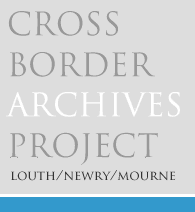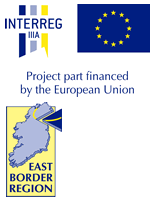Landowners of County Louth
Roden
The town and lands of Dundalk, around 2,500 acres, were granted to Marcus Trevor, Viscount Dungannon, by Charles II in 1667. The third viscount, Mark Trevor, apparently was heavily indebted, and in 1692 the Dundalk estate was sold to James Hamilton of Tollymore, County Down. The son of this James Hamilton, also James, was created Viscount Limerick in 1719, and earl of Clanbrassil in 1756. Clanbrassil had two children: James, his only son and successor (as 2nd Earl of Clanbrassil in 1758), and Anne, who married the Hon. Robert Jocelyn, later 1st Earl of Roden (1731-1797). Her brother, James, the 2nd Earl of Clanbrassil married later in life. By 1772 there was speculation as to the future destination of his estate, given that he was 'forty-five, an English member [of parliament], has employment of £3,000 a year and an estate of £7,000, a most domestic man, the last of his family and yet will not marry, so that Lord Roden has a good chance'1. Despite his marriage the 2nd Earl remained childless, and so on his death in 1798 his estates passed for the remainder of her life to his sister Anne, now countess of Roden. On her death in 1802 the estates devolved on her eldest son, the 2nd Earl of Roden (1752 - 1820).
The Jocelyns, earls of Roden, were originally based in County Tipperary. Their consequence was greatly increased through their Clanbrassil connections; Jocelyns were returned for the parliamentary borough of Dundalk through the patronage of the 2nd earl of Clanbrassil, who also used his influence to obtain offices and emoluments for his sister's family. By the time the 2nd Earl of Roden inherited the Clanbrassil estates they had been much reduced by enforced sales for the payment of debt, to the Dundalk estate in County Louth, and the Tollymore estate, Bryansford, County Down. The Rodens also had property in England, the 1st Earl having acquired by inheritance the English baronetcy and English seat of Hyde Hall in Hertfordshire. The Clanbrassil and Roden estates having been geographically rationalised (the Roden estates based around county Tipperary having been sold off) and disencumbered of debt, and the survival of Dundalk as a single member constituency after the Union gave the Roden family considerable influence. The 3rd Earl of Roden held several appointments in the royal household between 1812 and 1831, obtaining a United Kingdom peerage in 1821 which gave him a seat in the House of Lords.
The Roden line continued through the sons of the third earl until the fifth earl, a younger son, died without issue in 1897. After this, the Roden title and estates reverted to the line of a younger son of the second earl of Roden, who had died in 1820. This line has continued down to the present tenth earl of Roden, Robert John Jocelyn, who currently resides in Doon House, Cashel, County Galway, the family estates in County Down having been sold in the 1940s.
Several portions of the Roden Dundalk estate were sold off under auspices of the various land acts of the nineteenth century and early twentieth centuries, culminating in the Irish Free State government lands purchase acts of the 1920s. The residue of the estate, mainly freeholds and ground rents, were sold in 2006, thus finally severing the links between the earls of Roden and the town of Dundalk. The Roden collection held by Louth County Archives consists of documents created through the running of the Roden estate, which included most of Dundalk town.
Click to view list of Roden papers held by Louth County Archives (opens Word document, 746KB).
The Public Record Office of Northern Ireland also holds papers concerning the Earls of Roden, see www.proni.gov.uk
Footnotes:
1. Quoted in Malcomson, A.P.W., The Pursuit of the Heiress: Aristocratic Marriage in Ireland 1740-1840 (Belfast 2006), p. 207
- home |
- about project |
- online catalogue |
- online exhibitions |
- activities |
- oral history collection
- about us |
- contact us |
- legal |
- acknowledgements
© Cross Border Archives Project . Website design and development by morsolutions.
This project is part financed by the European Union through the Interreg IIIA Programme managed for the Special EU Programmes Body by the East Border Region Interreg IIIA Partnership.




